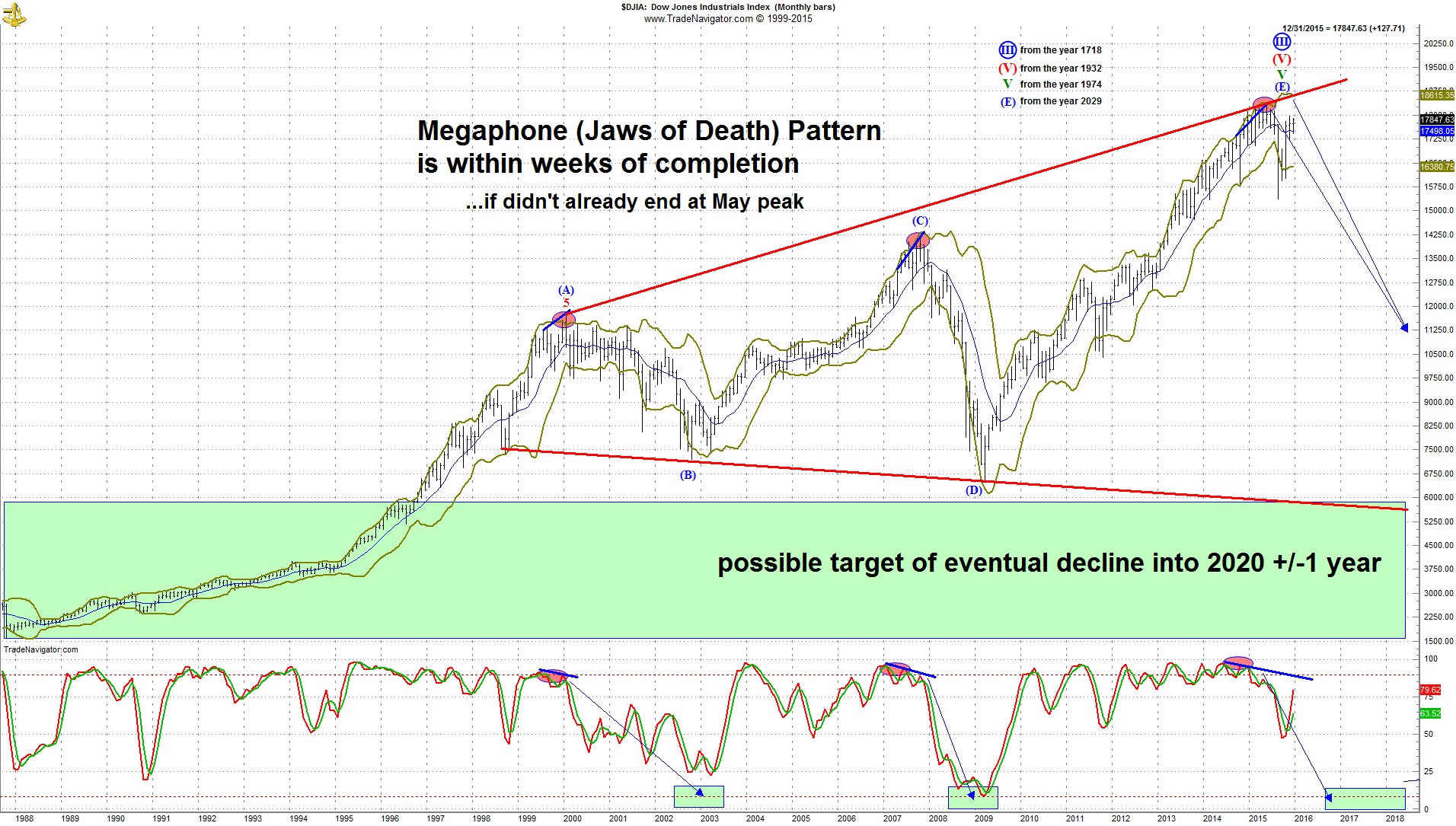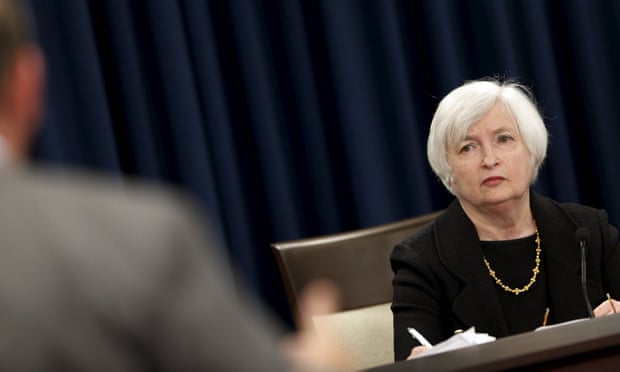by Dr Invest
Massive confusion continues in the markets with proclamations that our economy is "taking-off" to "collapse is eminent". The truth is that our economy has been on a "quantitative fix" since 2012. No one would argue that the market has continued to rise since 2012, but it is merely smoke and mirrors. When this business cycle completes, you will be worse off than when you began.
There must be some basis for measurable economic growth. Let me explain it this way, "Real economic growth originates from two things, jobs and productivity." You might point out that job growth is rocketing, but it is not! The jobs being recorded are low pay and low hours. Furthermore, more people have dropped out of jobs, so total jobs held in 2015 are less than were held in 2000. Even worse, there are more people on social services in 2015, than in 2000. Our economy is in trouble.
Ken Goldberg points out in his article, "Why the Dow Jones Industrial could begin a 70% decline in the next few Weeks", that fundamentals are pointing to a collapse. Goldberg writes:
There is a rare bull market pattern that, once it ends, is one of the worst formations that can occur. It has two names. Some call it the megaphone pattern, as its shape resembles what many know as the voice amplifier that coaches and referees use to get large groups of people to pay attention.
Those who know its implication for the financial markets refer to it as the Jaws of Death pattern. In fact, both names have meaning for this ominous indicator of egregious crowd bullishness. Its megaphone analogy reminds us that when this pattern appears, investors need to pay attention that the party attitude of recent memory is on it's "last call." The Jaws of Death descriptor is clear. When the pattern ends, the jaws snap shut like those of an alligator chomping down on hapless prey that got too close to the water.
Goldberg tells us that a DOW at 6,000 is within the realm of possibility.

I agree with his assessment. Though the market has risen dramatically because of stimulus, this rise is not economic. What I mean is that GDP continues at 1.9, when the historical average has been 3.2. We are in a RECESSION because we are not even reaching historical averages for the GDP which is the measure of economic growth. Even the most bullish of economists don't see us reaching the 3.2 average for GDP anytime soon and the most positive words they can find is malaise and stagnant. The are hardly encouraging words
Look at the BOTTOM RED LINE in the graph. That is where we are headed unless there is more Q.E. I can't imagine the FED increasing interest rates, but even if there is a temporary increase in interest rates, I could see them lowered again in 2016 in yet another attempt by the FED to stop a faltering economy. There are still some tools in the FED's toolbox, but you can understand how 0% rates put the FED at a disadvantage.
There is a belief that one can quickly sell their stocks and get out of the market before they get really hurt. Many of the people who contacted me in October didn't even know that their was a problem until they had lost thousands. I don't believe that there will be another bounce when the market turns down again. The second issues is the rapidity at which the markets can fall. There are two reasons for this. First, is that trading is done by computer algorithms. And second, you need buyers to sell. When algorithms are initiated, markets move with such rapidity that no one is interested in buying your stocks until a bottom is reached. Only the very earliest sellers are successful keeping their profits. Those early sellers typically have T-1 internet access and dedicated lines to brokerages so the success of their trades are measured in milliseconds. The average Joe will not have that kind of access, even if you have your stop-sells in place.
SO WHAT CAN I DO
Recognize that we are at the end of a business cycle. It might be six weeks or six months, but this business cycle is over. Brokers, financial advisers, the Federal Reserve, the White House, bankers, wall street.... all of them have an interest in keeping the chump (investor) in the game. Wisdom would be to get out of the game before you get hurt.
One individual asked, "Do I need to get out of my bonds?". I found out that he had purchased the bonds years ago returning 5% a year until maturity. When you can only get .82% interest, 5% interest seems like a huge return. Get rid of the stocks that are going to injure you.
What about taxes? Taxes are kind of a relative thing, but are regularly used by financial advisers to threaten their clients. Again, every situation is different and requires some analysis, but losing 70% of your stocks value seems much worse than paying 20% capital gains. Furthermore, you will have a NEW TAX BASIS when you buy back into the market.
First scenario: XYZ Stock cost you $100 in 2008 and has doubled in value to $200 in 2015. The market collapses 70% leaving the value of your XYZ Stock at $60.
Second scenario: You purchased XYZ Stock at $100 in 2008 and it doubles in value to $200 in 2015. You sell XYZ Stock at $200. Your COST BASIS is $100, and you pay 20% in capital gains. You now have a total, after taxes, of $180.
Which of these scenarios left you in a better position at the end of the business cycle? Let me extend these scenarios a bit further. As the market moves out of a decline in 2018, you purchase ABC Stock.
First scenario: ABC Stock is purchased with the $60 you had left over from your losses in 2016, but ABC Stock rises 100% and the value of your ABC Stock is now $120.
Second scenario: ABC Stock is purchased with the $180 you had after selling XYZ Stock and paying capital gains taxes in 2016. ABC Stock rises 100% and the value of your ABC Stock is now $360.
Which of these scenarios left you in a better position?
Yeah but what if I bought XYZ Stock at $1 and it was worth $200 in 2015, and now if I sell it I will have to pay 20% capital gains taxes on $199. Listen, even then you're only paying $40 in capital gains, leaving you with $160. But even then, that is better than just having only $60 left over after the market falling 70%. (which was the original argument)
The brokers, financial advisers, and banking system want to put you into their system and hold you there. A Buy and Hold mentality ends in entrapment by the system. Do your own mathematics and you will likely see that things are not as dark as your financial adviser has presented it.
(Note: the above information is for entertainment purposes only and not to be used in anyway as investment advice.)















